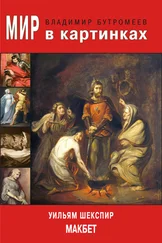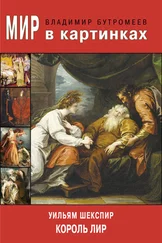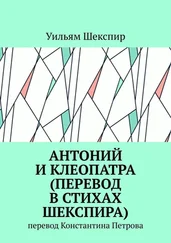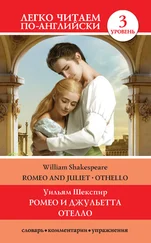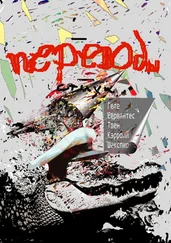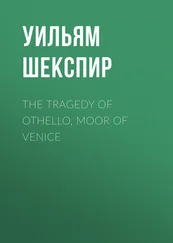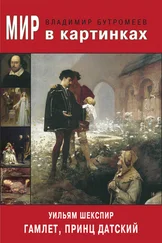Уильям Шекспир - Othello
Здесь есть возможность читать онлайн «Уильям Шекспир - Othello» — ознакомительный отрывок электронной книги совершенно бесплатно, а после прочтения отрывка купить полную версию. В некоторых случаях можно слушать аудио, скачать через торрент в формате fb2 и присутствует краткое содержание. Жанр: Старинная литература, на английском языке. Описание произведения, (предисловие) а так же отзывы посетителей доступны на портале библиотеки ЛибКат.
- Название:Othello
- Автор:
- Жанр:
- Год:неизвестен
- ISBN:нет данных
- Рейтинг книги:4 / 5. Голосов: 1
-
Избранное:Добавить в избранное
- Отзывы:
-
Ваша оценка:
- 80
- 1
- 2
- 3
- 4
- 5
Othello: краткое содержание, описание и аннотация
Предлагаем к чтению аннотацию, описание, краткое содержание или предисловие (зависит от того, что написал сам автор книги «Othello»). Если вы не нашли необходимую информацию о книге — напишите в комментариях, мы постараемся отыскать её.
Othello — читать онлайн ознакомительный отрывок
Ниже представлен текст книги, разбитый по страницам. Система сохранения места последней прочитанной страницы, позволяет с удобством читать онлайн бесплатно книгу «Othello», без необходимости каждый раз заново искать на чём Вы остановились. Поставьте закладку, и сможете в любой момент перейти на страницу, на которой закончили чтение.
Интервал:
Закладка:
I don’t think Cassio contained any surprises. I wanted him to be a different social class from Iago. I wanted him to be much more beautiful than Iago but still a soldier. There are images that echo each other through the play; this is another very emotionally immature person. His only relationship is with a whore whom he doesn’t visit very often. These aren’t grown-ups! Arguably the only real grown-up in the play is Emilia. Everybody else’s lives are very blinkered. I rather liked Cassio—I grew to like him more and more. There’s so much said about him, and actually working on him and rehearsing him you really felt sorry for him. But he is quite naive. There’s a lot of naïveté within the play, and a lack of sophistication.
What is revealed by Emilia’s speech at the end of Act 4 Scene 3 about how women as well as men have affections, desires for sport, and frailty?MA: I think it’s a speech about Emilia’s own relationship. It’s a desperately sad scene because they are just missing each other in the dark. Desdemona is being very selective with what she hears, and Emilia, who is a woman of the world, has seen it all in all its horror, is in a way warning her. And Desdemona is sort of sticking her fingers in her ears and going “La, la, la, I can’t hear you!” That’s the tragedy of that scene. I think it’s there because Iago is never going to tell you the truth about himself, but Emilia does. She doesn’t talk about other relationships. In fact what she says, rather as Shylock does, is “Do we not have affections too? Just because we’re put upon, it doesn’t make us insensible.” It’s the best statement about women in the past five hundred years! The scene’s prime function is to show us two very different female views of the world, and to give us insight into the Iago–Emilia marriage.
Critics worry about the play’s “double-time” scheme: looked at one way, the events are compressed over just three nights (with a gap for the sea voyage after the first act), but for Iago’s plot to make sense, a much longer span of time must pass. Why does this not seem such a problem in the theater?TN: Shakespeare uses the device of “double-time” scheme in many of the great plays. It’s not a mistake, it’s an intention, and it’s intended for theater performance, not for the scholar’s study. He creates an illusion of scale, distance, and the elapse of time suggesting epic, life-changing events, but in performance there must always be a sense of a narrative urgently moving on at a speed which can neither be controlled nor contained by the protagonists. Shakespeare also uses anachronism as a device, so that his plays can be set in an ancient and contemporary world at one and the same time. Cleopatra playing “billiards” in ancient Egypt, Gloucester not needing “spectacles” in ancient Britain are not oversights but, like the street talk and slang abounding in the plays, spurts of contemporary energy for an audience engaged in the here and now of the drama.MA: I strongly suspect Shakespeare didn’t think about it very much. What he obviously did want to do was compress the timescale, so that in the three hours in the theater you are shocked by the speed at which things happen. If he were to give naturalistic explanations for events he would have to stretch it out and therefore the whole thing would be less shocking. It’s the shock of the speed and scale of Othello’s decline that creates the effect.
How did you and your designer set about creating the contrasting worlds of Venice and Cyprus, and of public versus private life?TN: Othello is the most domestic of the tragedies. We divided the play at a point where the handkerchief is dropped. As the second part begins, any one of four characters might have picked it up before, almost randomly, Emilia noticed it. A negligible small square of fabric becomes the deciding factor in a catastrophe of multiple deaths, terror, and the furthest extremes of emotional suffering. Shakespeare couldn’t be clearer. The climax of the play takes place in a bedroom . I was so glad, therefore, to be doing a small theater intimate-scale production, where the bedroom could be the size of a bedroom, and not, as we have often seen, a palatial space the size of two tennis courts, robbing Shakespeare of his messy, muddled, up-close revelation of what happens behind the locked doors of a marriage gone wrong.MA: One of the challenging elements in designing Shakespeare is that he wrote for a nonscenic theater, and therefore saw sequences following quickly, one after the other, changing location very swiftly. I remember Cicely Berry saying once,“There’s no pause in Shakespeare until the end of the play.” We tried very hard to keep the flow of things, so both Venice and Cyprus were quite spare; consequently, if you introduced an item of scenery it really had an effect.For Venice I wanted something quite magisterial and formal, not particularly decorative. I wasn’t concerned with a literal representation of Venice so it wasn’t very beautiful; rather it was elegant and spare. If I were to put another adjective to it, it would be masculine. The scene where Othello persuades the Duke and the Senators to accept the marriage was very formal. We chose early twentieth-century costumes because, like Trevor [Nunn], I felt that the military context was very important. The Duke and Brabantio were like the formal elders of Venice, in frock coats and in an elegant, very male setting, with a big long table, inkwells, and blotters: quite starchy.In Cyprus, although the setting is an army camp, it is much more sensual. So we wanted heat and light as opposed to coolness and elegance. I wanted something that evoked a camp, so there was no architecture. Robert Jones [the designer] had these canvas panels that came in and out so that you could completely shutter off the upstage area, or open the whole stage up. It could configure into different arrangements that would give you different locations. The great benefits of what he did were twofold. One, it was in quite a gentle, warm color that made it feel very sensual. If you backlit it you could perform shadow-play behind it. The other thing was that it seemed to me that there are several stunning moments in the play where you go from an incredibly intense and intimate scene into one where suddenly everyone is present: for example, Act 4 Scene 1, which begins with Othello and Iago, where Othello is absolutely losing his mind. Lodovico arrives with news from Venice and suddenly the stage is flooded with soldiers. It’s the scene in which he eventually slaps Desdemona. So from that intimate, awful, ferocious, locking-antlers quality which Othello and Iago have, suddenly everything flew out and we were in a public place and Othello was on public show; he was the army commander, and he was expected to act in a particular way and yet he was clearly cracking up. This places the audience in the position of being in on a secret about Othello’s internal life which the other characters aren’t aware of. That feeling of being able to go from a two-handed scene to a twelve- or fifteen-handed scene, at the click of a light switch, was really important.I also felt it was important that you got a strong sense of Emilia and, particularly, Desdemona being fishes out of water in Cyprus; that they shouldn’t, strictly speaking, really be there. So, for example, when Desdemona landed in Cyprus, she arrived with half a dozen hatboxes. She was an elegant, urban girl with a lot of money. It’s hot; there are a lot of soldiers, with sweat under their arms, and this girl arrives as if she’s gone to the Mediterranean on holiday! I wanted the increasing feeling that she didn’t know what to do with herself at the formal arrival in Cyprus. Should she join the parade? Should she watch the parade? During that wonderful scene where there’s the riot in the middle of the night, we played it that Othello and Desdemona were trying to consummate their marriage and are interrupted and he has to get up. He arrives bare-chested, holding a sword, and he’s clearly been disturbed from his love life. And she comes on covered by a sheet and all the men suddenly become aware that there’s a half-naked woman there. She was out of place. So although it was a very sensual place it was not there to accommodate sophisticated, well-dressed, wealthy, urban girls.
Читать дальшеИнтервал:
Закладка:
Похожие книги на «Othello»
Представляем Вашему вниманию похожие книги на «Othello» списком для выбора. Мы отобрали схожую по названию и смыслу литературу в надежде предоставить читателям больше вариантов отыскать новые, интересные, ещё непрочитанные произведения.
Обсуждение, отзывы о книге «Othello» и просто собственные мнения читателей. Оставьте ваши комментарии, напишите, что Вы думаете о произведении, его смысле или главных героях. Укажите что конкретно понравилось, а что нет, и почему Вы так считаете.


